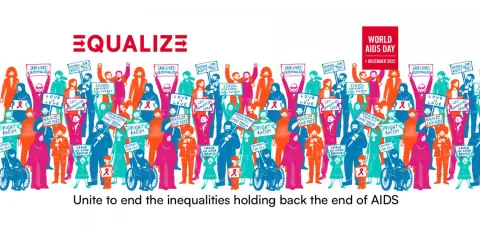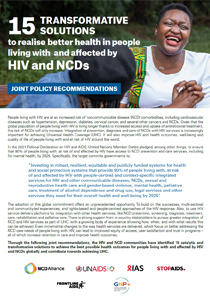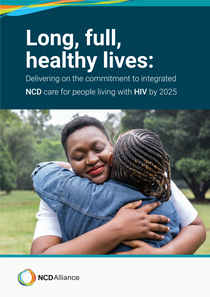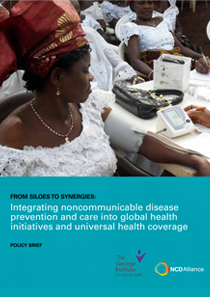World AIDS Day – let's end inequalities in access to NCD services for people living with HIV

In the lead up to World AIDS Day on 1 December, UNAIDS is calling on all of us to unite to end the inequalities holding back the HIV response.
Under the slogan ‘EQUALIZE’, they are urging for increased availability, access and suitability of HIV prevention, treatment and care services; the removal of punitive laws and policies that perpetuate stigma and discrimination of people living with and affected by HIV; and equal access to the best HIV science, between communities and between the Global South and North.
Contributing to the campaign, NCDA is calling for increased access and affordability of integrated HIV and noncommunicable disease (NCD) care around the world. Integrated care should serve as a stepping stone towards Universal Health Coverage (UHC), which will ensure NCD care for all who need it.
NCDs threaten decades of progress on HIV
Antiretroviral treatment (ART) is one of science's greatest achievements, transforming HIV from a death sentence into a chronically manageable illness. But these gains are threatened by NCDs.
As people living with HIV live longer, they face the same increasing threat from NCDs as the wider population. In many cases, they face a higher risk because of their status. By 2035, a projected 71% of people living with HIV will also live with one or more NCDs, versus 56% of people without HIV. And, death rates from NCDs are nearly twice as high in low- and middle-income countries compared to high-income countries. Keeping people living with HIV healthy will require a new integrated approach to health care.
Making the link between HIV and NCDs
In the 2021 Political Declaration on HIV and AIDS, countries committed to 90% of people living with, at risk of and affected by HIV have access to noncommunicable disease prevention and care services, including for mental health, by 2025.
But around the world, access to NCD services is severely unequal.
Until the past two decades, the main disease burden in much of the developing world has been infectious diseases, including HIV, with the majority of resources being allocated there. NCDs are a relatively new threat, and simply do not receive the same funding. This means fewer clinics are available, and they are not as well equipped, translating into far fewer opportunities to access quality care.
Also, people living with HIV in most countries receive free HIV services, but have to pay out-of-pocket for NCD services. Out-of-pocket expenses for NCDs are often catastrophic, driving 100 million people into poverty each year.
Integrated HIV/NCD service delivery has been shown to be more affordable and sustainable in low- and middle-income countries, while better meeting the needs of people living with HIV and chronic diseases. However, there are precious few examples where integrated care has been implemented. More data is urgently needed to support the understanding, development and implemention of integrated HIV and NCD care.
WATCH: Combining HIV and NCD care to save lives
After losing two children soon after birth, Sally was diagnosed with AIDS, then cervical cancer. At the Rangi Tatu clinic in Tanzania, vital connections are being made between HIV and NCDs – see why this matters to patients like her.
NCDA resources making the link between HIV and NCDs
15 transformative solutions to realise better health in people living with and affected by HIV and NCDs
NCDA alongside UNAIDS, GNP, IAS, STOPAIDS and Frontline AIDS have published joint policy recommentations to support and encourage the realisation of the 90% integrated care target set at the UN High Level Meeting for HIV/AIDS in 2021. The document provides 15 recommendations, broken down by stakeholder and level of health care.
Long, full, healthy lives: Delivering on the commitment to integrated NCD care for people living with HIV by 2025
Policy Brief - From Siloes to Synergies: Integrating noncommunicable disease prevention and care into global health initiatives and universal health


